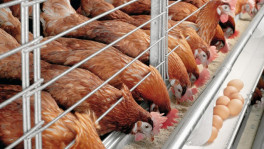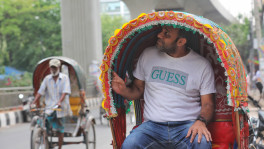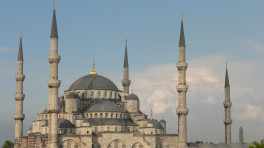The invisible fork of food
To Standage a cultivated field of maize, or any other crop, is as man-made as a microchip, a magazine, or a missile.

The book looks at history in a very interesting way: as a series of transformations influenced by food. Throughout human history food has acted as a catalyst of social transformation, political organization, geopolitical competition and military conflicts. It has shaped the past, and continues to dictate mankind's future.
Tom Standage's engrossing tome of a book "An Edible History of Humanity" is full of insights hard to find in a regular historian. An Oxford graduate in engineering and computer science and a business editor of Economist, Standage manages a scientific worldview of events we hitherto tend to attribute to the domain of sociology or political science.
The 2009 book explains how the adoption of agriculture has made possible new settled mankind on the path to the modern world. But we often miss the fact that the staple crops that had supported the early civilizations – barley and wheat in the Near East, millet and rice in Asia, and maize and potatoes in Americas – were not discovered by sheer chance. They emerged through a complex process of coevolution. Desirable traits were selected and propagated by early farmers.
Standage reminds us that these staple crops are in fact inventions. These are deliberately cultivated technologies which only exist as a result of human intervention, nothing less than an ancient genetic engineering.
He writes: "In the process, mankind changed plants, and those plants in turn transformed mankind."
To Standage a cultivated field of maize, or any other crop, is as man-made as a microchip, a magazine, or a missile. Farmed land is as much a technological landscape as a biological one.
Three domesticated plants in particular – wheat, rice, and maize, proved to be most significant. They laid the foundation of civilization.
Food has also acted as a tool of social organization and shaped the structure of complex societies. The political, economic and religious structures of ancient societies were based primarily upon the system of food production and distribution. Communal food storage and irrigation fostered political centralization; agricultural fertility rituals were evolved into organized religions.
The book illustrates how food-trade routes acted as international communication networks that fostered cultural and religious exchanges as well.
Standage writes: "By far the greatest transformation caused by food trade was a result of the European desire to circumvent the Arab spice monopoly. This led to the discovery of the New World, the opening of maritime trade routes between Europe, America, and Asia, and the establishment by European nations of their first colonial outposts. Along the way, it also revealed the true layout of the world."
Standage's claim that sugar and potatoes, as much as the steam engine, underpinned the Industrial Revolution, may seem an overstatement. But his unique way of interpreting history from a completely different perspective is intriguing. Standage writes: "In Britain, where the process (of Industrial Revolution) first began, the vexed question of whether the country's future lay in agriculture or in industry was unexpectedly and decisively solved by the Irish Potato Famine of 1845."
Standage explains how food has determined the outcome of large-scale military conflicts, such as American Civil War. Napoleon's rise and fall was intimately connected with his ability to feed his vast armies. In modern world food has become a battlefield for issues as diverse as trade, development and globalization.
In his book "The Wealth of Nations", Adam Smith likened the unseen influence of market forces to an invisible hand. Standage, in his book has similarly likened the influence of food on history to an invisible fork that has prodded humanity and altered its destiny in a way people generally are unaware of.


 Keep updated, follow The Business Standard's Google news channel
Keep updated, follow The Business Standard's Google news channel














